bromocriptine tablet uses

 Thought LeadersDr. Wael Yared and Dr. Frank BuescherCTO and Executive VP of Digital InnovationTecan and Sysmex Corporation
Thought LeadersDr. Wael Yared and Dr. Frank BuescherCTO and Executive VP of Digital InnovationTecan and Sysmex CorporationA Q&A discussion based on Unlocking the power of digitalization for life science and diagnostics services, a Science/AAAS webinar with Frank Buescher from Sysmex Asia Pacific, Singapore, and Dr. Wael Yared, Chief Technology Officer, Global Head of Research and Development, Tecan, Männedorf, Switzerland, on 26th May 2021.
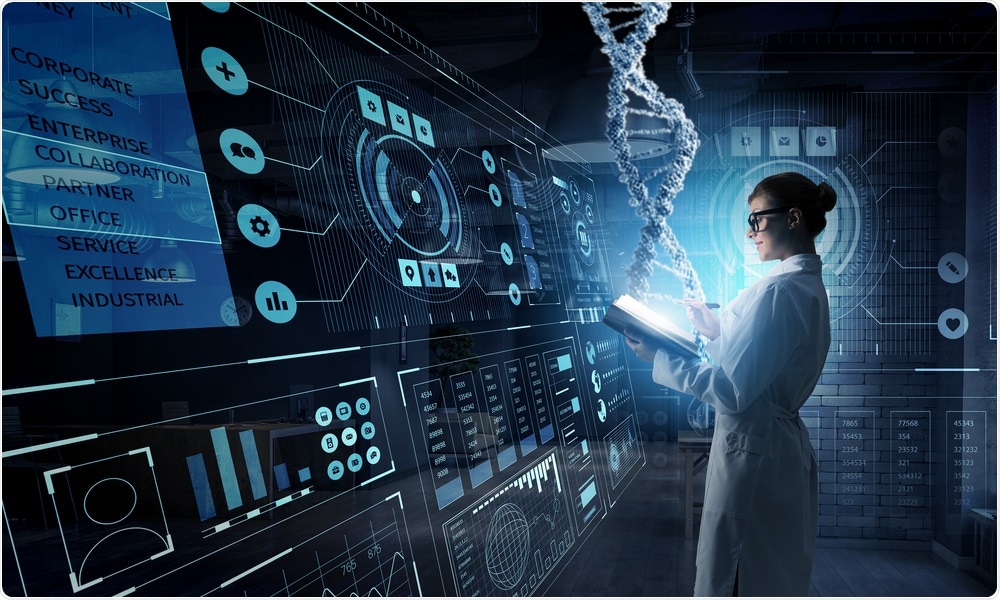
Image credit: Sergey Nivens/Shutterstock.com
Frank Buescher discusses the digital journey of IVD manufacturer Sysmex
Could you start by giving our readers a brief overview of the current landscape regarding digitalization in life science research?
An undeniable trend across the globe today is the prevalence of increased connectivity, aggrenox epidural guidelines particularly through the use of digital technologies and electronic devices that allow us to be linked to each other, our workplaces and a plethora of information sources.
The global pandemic has accelerated the acceptance of many of these technologies, for example, telemedicine, virtual conferences and remote control of equipment.
In life sciences research, diagnostics and clinical labs, the uptake of digital connectivity has been proceeding cautiously for several years, but this has also been impacted by pandemic-related pressures.
These and other industries have much to gain from connected platforms and digital services, and they could take advantage of lessons learned from other pioneering industries.
In the same way that the healthcare sector has seen the benefits of embracing telemedicine, laboratories are recognizing the advantages of being able to maximize the use of their equipment, monitor usage, minimize downtime and use predictive maintenance to reduce equipment failures.
Other potential advantages of digitalization include the capacity for remote staff training and customer support, and the availability of analytics to track equipment use and productivity.
What sort of things should an organization or laboratory consider before embarking on a journey to embrace digitalization in their work?
Digital transformation never stops, but it is possible to learn a lot about this process – in particular, important do's and don'ts – from Sysmex’s digital journey over the last decade.
Key questions that should have been asked at the outset were where to start when embarking on our digital transformation journey and, more importantly, where to stop.
Research has shown that digital transformation in companies often fails and that this occurs in a cyclical manner.
Many companies, including Sysmex, implement digital transformation everywhere at once – CEOs get excited about new customer connectivity and new customer relations, and the resulting increase in sales, while CFOs get excited about efficiency gains and cost savings.
Unfortunately, there is not always enough planning around how these new systems will work together and fit into the organization's wider goals. To use an analogy, it is like going to the grocery store, buying everything on the shelf, and then looking at the pile of groceries when you get home and not knowing what to cook with them.
Sysmex is a commercial company, so the key question was whether the digital strategy tallied with the company's financial goals. That sounds like an easy question, but it is not.
Digital transformation consultants will often provide a business blueprint with goals around increasing sales and reducing expenses, but there needs to be consideration given to how this is achieved in practice and what metrics will be used to measure this.
Other questions we did not ask were about the organization and its people being ready. Effective change management is key, because when you digitalize things that were not digital before, people behave in different and unexpected ways.
It may be necessary to rethink products to accommodate digital offerings, and it is important to consider existing data that may be leveraged to better accomplish digitalization initiatives if it is sufficiently structured and comprehensive.
The final considerations must be outward-looking. If you want to do something for your customer, the question is always around whether the customer is ready and whether any planned digital transformation strategy tallies with customer benefits.
This can be quite challenging because we are inclined to think about customer benefits from our own biases as manufacturers, asking questions designed to get the answers we want.
From a technology development perspective, an end user must ultimately benefit from this digitalization in the way they operate, and generate useful data points out of the instrumentation or process being digitized.
The institutions that run these assets must also benefit from digitalization, and in medical applications, so must the patients, on whose behalf this entire work is being done. If we cannot map at least a high-level view of the advantages to these communities of beneficiaries, then it is not worth doing.
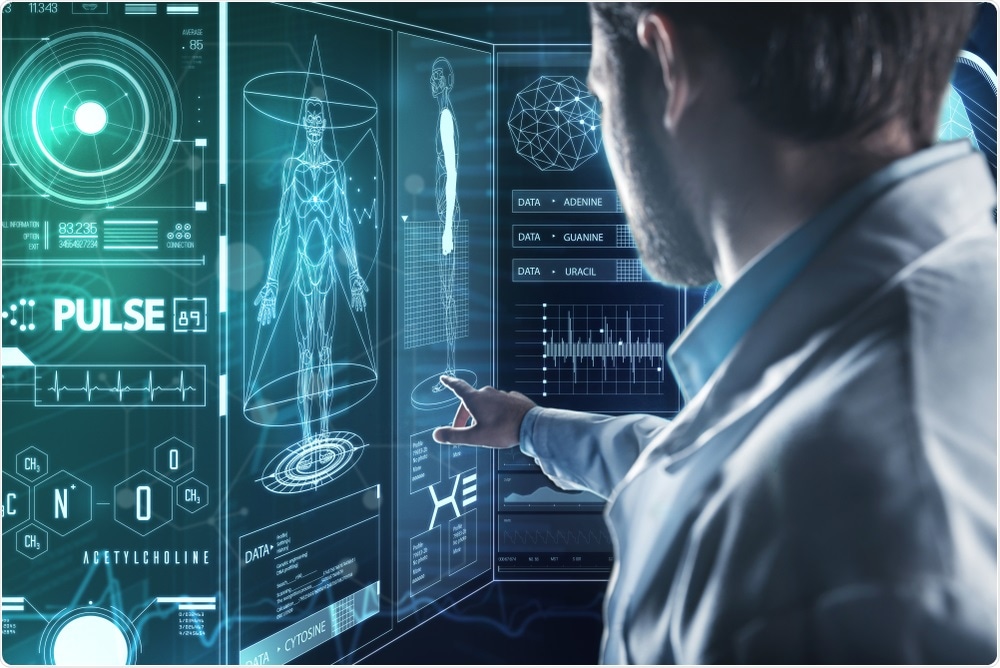
Image credit: Yakobchuk Viacheslav/Shutterstock.com
Can you tell our readers more about the importance of centralizing the experience of customers, employees and stakeholders in a digital transformation strategy?
When thinking about digital transformation, customer experience should be central. There should be an exploration around common issues for both the company and its customers. One key thing that impacts a lot of Sysmex customers, and the industry overall, is a fundamental change in the workforce.
While Gen X, Y, Z and millennials have been well documented, we now have the coronials entering the workforce, leading to much higher mobility and volatility in our workforce. For a laboratory, this is often linked to people with expertise leaving after a relatively short time, while for us, a manufacturer, this impacts the overall quality of our service and support.
We need 18 to 24 months of ramp-up time to have service engineers fully productive and able to solve all the issues that appear with instruments in the field.
The younger generation is less inclined towards on-site troubleshooting services, and we found that, in some regions, the average time that engineers would stay at Sysmex is around 2 to 3 years. Laboratories and manufacturers need to shorten this ramp-up time, but this involves potentially replacing decades of experience with digital tools.
How has digitalization impacted training and service in terms of the overall customer experience?
There is now more competition from emerging markets like China, and innovation cycles are becoming shorter. Big corporations are always slower than small start-ups in emerging markets, so they will need time to adapt.
Due to this, there is a real need to focus on customer experience in terms of two key products – service and training – but in many ways, these key areas have not changed much over the past 40 or 50 years.
Sysmex started making use of the Internet of Things (IoT) in the USA in 2010, which led to connectivity between all our analyzers, iPad/mobile applications and remote service infrastructure.
The adoption of IoT technology was born out of necessity. At that time, we had moved from a 3 % market share to around 50 % market share, but we were still using the classic service model whereby a customer called and we dispatched an engineer.
This became impractical due to the sheer number of engineers required, and the cost became prohibitive.
We moved onto connected analyzers and remote service because we found that 70 % of the calls that we received did not require the dispatch of a service engineer – they could be handled remotely.
This was very successful for internal purposes, and our cost of service was kept at a much lower level than it would have been if we had maintained a linear growth of our workforce in line with installations.
Customer benefits were mixed, however. There was reduced downtime and fewer service requirements, but our mobile application did not work well because we had incorrectly assumed the customer would be interested in this feature.
Instead, many customers only used this when they were waiting for an engineer, to check when they would arrive. The key lesson of this experience was that the process of digitalizing a customer experience should not be based on incorrect hypotheses of customer values.
To avoid this, it is advisable to build in software and hardware analytics to gather data on how digital solutions are being used in the field. A feedback loop on what actually happens with digital tools can help with this.
For example, analytics showing that a certain button on an instrument is pressed multiple times because the instrument does not give feedback on what is happening can prompt developers to address this issue in the next version of the system.
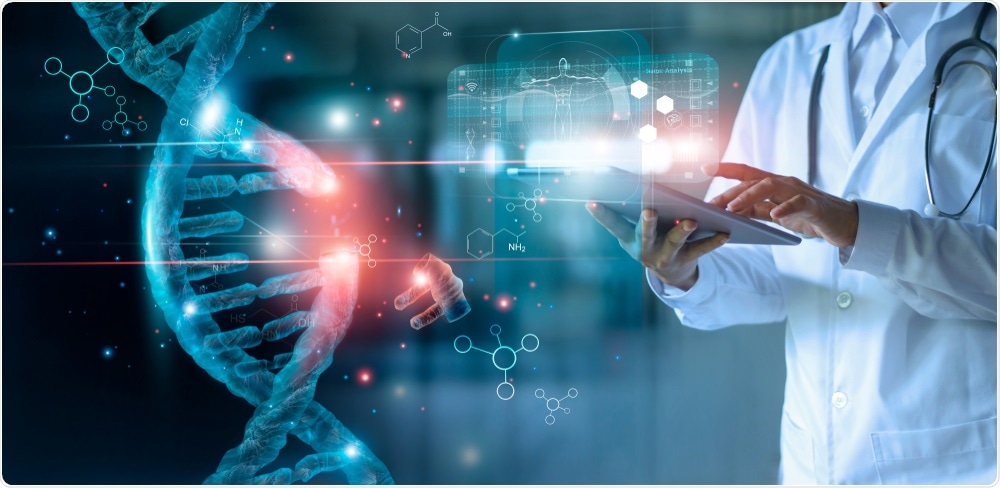
Image credit: PopTika/Shutterstock.com
What was Sysmex's experience when implementing augmented reality and the digital twin?
In 2017, we began working with augmented reality (AR) and the digital twin, thinking this would be the logical extension of the work we had done so far. Our organization was not ready at that time, but the experience was invaluable.
To build a digital twin, you need compatible CAD data, but we did not have appropriate CAD software or related data. We even had a vendor who was ready to build us the first digital twin, but we had no data to feed into this.
We also found AR devices challenging at that time. For many people, AR devices cause fatigue and nausea after around one hour of use.
The most interesting issue we came across was privacy concerns. Augmented reality is different from virtual reality in that it actually records or displays your environment and superimposes additional information over this.
In the US, you are not allowed to use any recording device in any laboratory, while in Europe there are strict GDPR laws.
For engineers to use augmented reality tools, they had to have multiple consent forms signed and study all the SOPs. If someone ran through their field of vision, the law implied the engineer would have to immediately stop and get additional consent from that person for their face to be recorded on the device.
It was a robust and mature technology, but the environment was not yet ready to accept it.
Despite these initial setbacks, we expect to relaunch our digital twin and the augmented reality tools shortly.
How has digitalization impacted the training of employees and customers?
In 2013, our US organization moved to virtual instructor-led training. This was also born out of necessity due to capacity issues. We had to fly thousands of customers every year to our training center in Mundelein to complete the basic training for our instruments.
And this was just key trainees – it was impossible to train all the operators – but this approach caused issues of inconsistency between how these trainees would pass on knowledge, ultimately causing key information to be lost. We realized the traditional ‘train the trainer’ concept just wasn’t adequate anymore.
Our live interactive virtual training is not traditional web-based learning – customers do the training in their own labs, with live instructions and interactive elements delivered remotely from our TV studios.
An unlimited number of attendees can be trained using this method, and in the US alone, more than 17,000 customers have been trained this way – a 99 % adoption rate.
COVID prompted us to expand this training, offering it overseas, but there were additional challenges with this.
The first issue that we encountered was the infrastructure and the capacity to accommodate all the time zones and language capabilities while still delivering live training.
If we wanted to deliver this without flying everyone to Chicago, we would have to invest in more studios – in at least four or five locations globally – a significant investment.
We struggled to find subject matter experts in some areas who were comfortable presenting remotely, and we faced issues with infrastructure and connectivity in emerging markets.
And finally, the pandemic forced us to shut down our studios in Chicago because we needed 15 to 20 people in one room to operate this kind of training, and that was potentially unsafe.
However, the pandemic has also meant that the demand for digital training continues to grow across all regions in Sysmex, prompting us to move to virtual classroom training, which does not require anyone to be physically present in a studio. Rather, it is avatar-based training using interactive avatars.
This platform has not been fully launched yet, but trials have had extremely good feedback, especially from the younger generation who reported finding the training less boring than a webinar or web-based training.
Dr. Wael Yared discusses digitalization from the point of view of the technology developer
What are the key building blocks of a digital transformation and a digital platform for something like training or customer service?
When developing these systems, a technology developer like Tecan must maintain an overall view and framework, using this to better understand the lab or project in question. This key goal is continually evolving towards more productive, reliable and secure integration of digital technologies.
Building blocks must be integrated end-to-end, incorporating the functionality of one or multiple instruments, or entire labs, in single location or at numerous sites across several continents.
The goal is to improve functionality, enhance robustness and reliability and, ultimately, derive metrics of operational effectiveness.
In terms of the key building blocks of these systems, the open digital ecosystem is the anchoring concept in the digital lab of the future across all data and workflows.
This concept recognizes that a lab does not consist of one instrument or one workflow. It is comprised of multiple workflows running a range of assays across many instruments from different technology vendors, across various labs and sites over the world.
The openness, interconnectivity and ability to break down fragmented silos of information are key to end users deriving tangible operational benefits – hence the need for a fully open digital ecosystem.
The concept of intelligent automation begins with the collection of data at multiple levels – the component, module and subsystem, whole instrument level and fleet of instruments – and the aggregation of that data over multiple layers in order to generate useful insights.
That vital insight is ultimately driving analytics, predictive maintenance and predictive operation of the instrument in order to enhance productivity and uptime.
Connectivity is certainly enhanced by digitalization, but there is an important aspect of data protection and privacy, and cybersecurity, that cannot be overlooked.
Digital solutions and these key building blocks must bring a certain balance between all the gains, productivity, and modern, integrated approaches to cybersecurity, including data protection and data privacy.
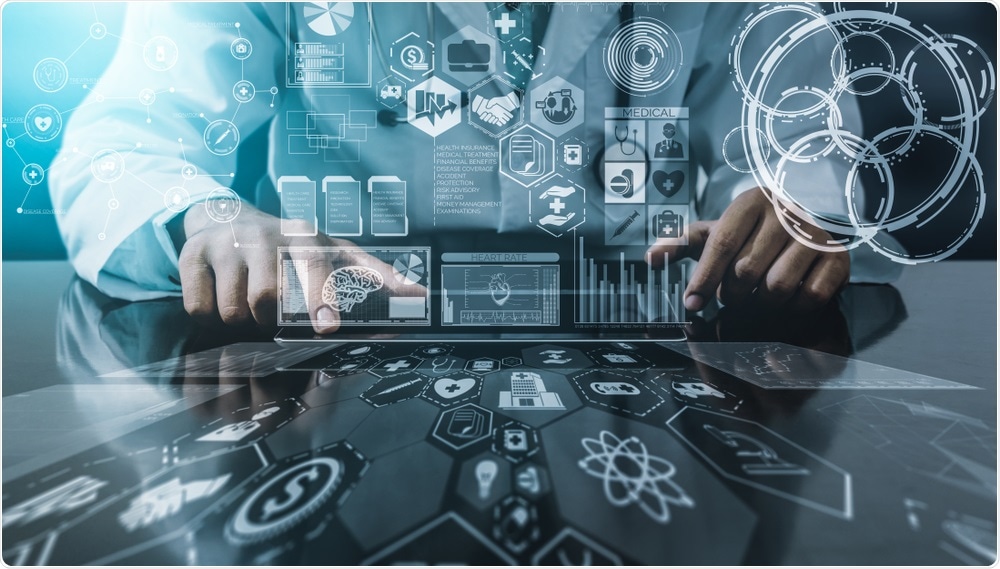
Image credit: Blue Planet Studio/Shutterstock.com
Can you tell our readers more about the different layers of digital systems and the architecture involved in these?
Digitalization has evolved into a multilayer approach and associated architecture. The first bottom layer is the physical component layer.
Digitalization needs to start on a component level, a module level and a subsystem level, then collect, aggregate and analyze data to provide new insights on, for example, the status, health, usage or programmability of a device.
The physical component layer feeds into the physical system's layers, enabling the analysis and diagnosis of entire intelligent workflows, and recovery from error and troubleshooting at the system level.
These systems are aggregated into fleets of systems at the digital infrastructure layer, which is now open for third-party analytical software and devices.
This will help evolution from a single lab with siloed data and limited connectivity to labs that are aware, instruments that are self-aware and global labs that are integrated, with data that becomes accessible. The more data we have, the more confidence we have in the accuracy of the analysis and its predictive power.
The topmost layer of these models is the applications layer, the APIs and the analytics. This is the layer that allows integration with leading lab IT systems, further integrating this digital spectrum across all layers to enable ease of use and powerful control.
Could you provide any example scenarios of these various layers in terms of digital transformations?
One illustrative example is the digital representation of physical instruments. For this digital transformation, it is important to introduce a representation of each physical asset that captures the exact state of that system.
That digital representation will capture, retain and evolve all the information about the system. This includes the hardware configuration, the different modules, and the software versions – not only as a static snapshot in time, but also as an evolving insight into the full lifecycle of the instrument.
We all have developed, deployed and used instruments in one or several labs, and we know that the product life cycle spans multiple years or even decades.
As assets in the clinic are validated, codified and frozen, this forces an evolution of a certain platform over many years. It's important to capture the evolution of that asset during this extended timescale.
These new digital representations – digital twins – are created in an advanced simulation. It is not enough to input a computer-aided design (CAD) model that shows a graphical and geometrical representation of the system, or even a model that details kinematics as users animate the CAD.
Properly capturing the physical behavior of the system starts with its technical and physical characteristics, but it must also include user behavior and simulation.
For example, if the instrument is dispensing a certain assay or certain reagents, what are the physics of this liquid handling and the sample preparation in this context?
If a user opens or closes a door, or this instrument interacts with another physical asset in the lab, this must be captured in the digitally-simulated representation of the instrument.
A digital twin is a set of technology tools, but what is most important is its business application, whether this is for product management, customer support, troubleshooting, training, or software development and testing purposes. Each of these is a different business instantiation of a digital twin.
The digital twin can be layered on top of existing simulation capability or used within applications like virtual reality, or for training purposes. It could be used instead of augmented reality enhancements for service and support functions, or as part of sophisticated tracking of the state of integrated analytics for troubleshooting and predictive maintenance purposes.
Ultimately, the use of a digital twin allows users to move beyond physical constraints and capture workflows at the top level in virtual format, before having access to the hardware or even without any access to the hardware in the lab.
This potential has become increasingly apparent during the COVID restrictions, which impacted many installations worldwide because customers could not progress their development work and asset integration without physical access to their labs and their instruments.
Data analytics create new insights for preventive and predictive maintenance, and the ability to aggregate this data from a single system across fleets will help with the management of the load and the optimization of the fleet based on usage, performance and system quality data.
This will enable the upscaling of end users in a number of areas, such as health, support and troubleshooting. It is a concrete example of why we are developing, deploying and pushing more on the digital technology front.
Another key illustration of the impact of digitalization lies in a more integrated approach to cybersecurity.
We address regulations and standards, form risk models with threat intelligence, and use modern approaches like zero trust and a mindset of continual assessment and monitoring of the threat level to improve and respond to cybersecurity concerns.
We aim to address three layers here: the top layer of digital applications, analytics and API security; the middle layer of devices, instruments and IoT infrastructure upon which our software is running; and the bottom layer, which is the data coming from each of the other layers.
In the application layer, we focus on factoring end-to-end cybersecurity into the initial data architectures and key application layers, ensuring this is central to deployment and maintenance.
We complement this work by conducting continual assessments and monitoring activities for live software.
In the middle layer, we follow a cloud-first approach to leverage the benefits of the cloud for unified resources and controls, resilience and reliability.
We complement this with a zero trust mindset, whereby we ensure strict verification of credentials like authentication, authorization, connectivity and privileges to only what is absolutely needed, with the assumption that data breaches are now a common occurrence in any setting.
At the data layer, we focus on ensuring that we have relevant, necessary, appropriate and modern control measures in place to protect the confidentiality and integrity of the data.
This is coupled with the means to audit the chain of custody of the data, whether this is input or output from the analytic software, parsing encryption or uploading of the log files themselves.
This third layer is still a work in progress, but we have learned from adjacent industries that embarked on this journey earlier than those of us in the life sciences and diagnostic space.
We have made good strides in implementing what we consider to be best practices, and there is still room to grow and improve.
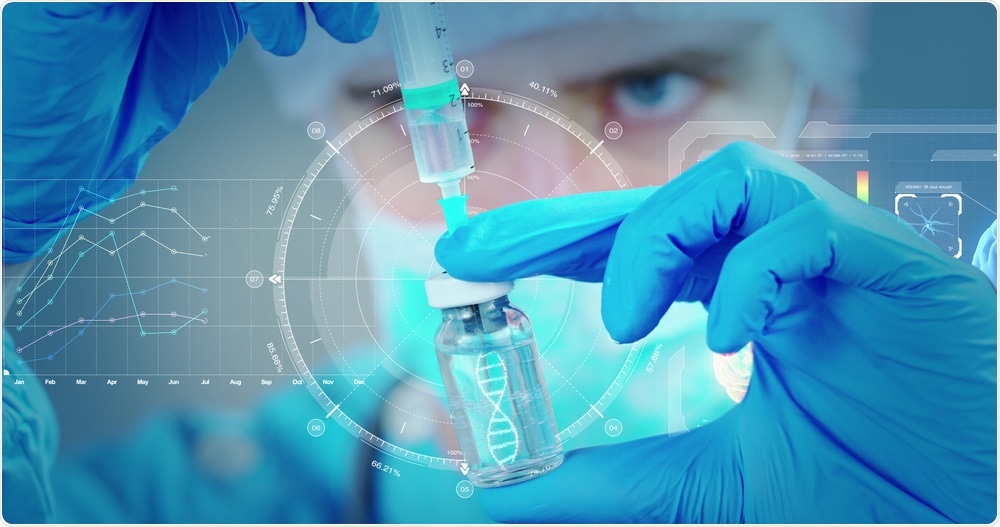 Image credit: HQuality/Shutterstock.com
Image credit: HQuality/Shutterstock.com
What do you see the role of digitalization being in the future?
Digitalization is a fundamental enabler and enhancer of labs of the future, across the life sciences and diagnostics space, from research into the clinic.
There is an excellent opportunity to evolve instrument and lab functionality by deploying cloud, in-lab, multi-site connectivity as part of an open digital ecosystem.
This will offer enhanced robustness and reliability via instruments that are now self-aware, able to capture errors from the operator and recover from them across instruments and sites.
It will also continue to benefit fleets of instruments, providing powerful instrument management and support tools with an enhanced approach to security and cybersecurity.
These benefits only matter, however, if one can realize improved operational effectiveness for end users and, ultimately, for patients. These improvements must be captured with tangible metrics such as uptime, reduction of downtime, prediction of failure, optimization of predictive maintenance, and more.
About the interviewees:
Dr. Wael Yared
Wael has over 20 years of research and product development experience, bringing complex product platforms to market across various sectors of human health. He held global R&D leadership responsibilities across automation, liquid handling, microfluidics, imaging and detection, spanning instrument hardware, software and algorithm development, as well as reagents for immunoassay and preclinical molecular imaging.
Prior to joining Tecan, Wael was Chief Technology Officer and Vice President of Corporate Development at US-based BioAnalytix, Inc. From 2010 to 2016, he was Vice President and Global R&D Leader of the Life Science and Technology business unit at PerkinElmer, Inc. Before that, Wael was CTO and Vice President R&D at VisEn Medical, Inc. from an early stage of its spin-out from the Harvard Medical School to its acquisition by PerkinElmer in 2010.
Wael received his PhD from the Massachusetts Institute of Technology (Cambridge, MA, USA) for his work on command language algorithms in robotics, and is a named inventor and author on a number of patents and publications

Dr. Frank Buescher
President & CEO, Sysmex Asia Pacific PTE LTD
Executive Officer, Sysmex Corporation Japan
2003-2006: SVP Health IT Sysmex Europe
2006-2008: Director IVD Business Development Sysmex Corp., Japan
2008-Present: President & CEO Sysmex APAC
2020-Present: Executive VP Digital Innovation

About Tecan

Tecan is a leading global provider of automated laboratory instruments and solutions. Their systems and components help people working in clinical diagnostics, basic and translational research and drug discovery bring their science to life.
In particular, they develop, produce, market and support automated workflow solutions that empower laboratories to achieve more. Their Cavro branded instrument components are chosen by leading instrumentation suppliers across multiple disciplines.
They work side by side with a range of clients, including diagnostic laboratories, pharmaceutical and biotechnology companies and university research centers. Their expertise extends to developing and manufacturing OEM instruments and components, marketed by their partner companies. Whatever the project – large or small, simple or complex – helping their clients to achieve their goals comes first.
They hold a leading position in all the sectors they work in and have changed the way things are done in research and development labs around the world. In diagnostics, for instance, they have raised the bar when it comes to the reproducibility and throughput of testing.
In under four decades Tecan has grown from a Swiss family business to a brand that is well established on the global stage of life sciences. From pioneering days on a farm to the leading role our business assumes today – empowering research, diagnostics and many applied markets around the world
Sponsored Content Policy: News-Medical.net publishes articles and related content that may be derived from sources where we have existing commercial relationships, provided such content adds value to the core editorial ethos of News-Medical.Net which is to educate and inform site visitors interested in medical research, science, medical devices and treatments.
Source: Read Full Article